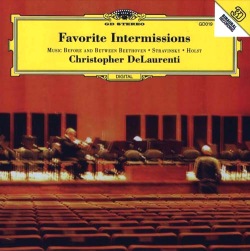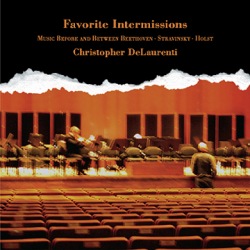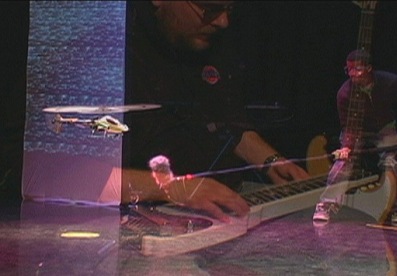I caught the Boston Modern Orchestra Project (BMOP) at the MATA Festival Tuesday night in Brooklyn.
1. Gil Rose and BMOP played a varied concert with conviction and panache Tuesday night. While there were wonderful soloists on the program, the ensemble really held the spotlight the entire night in the best possible sense – always blending well and making the most of lines, accompaniment and ensemble.
2. The show started with Alejandro Rutty’s “The Conscious Sleepwalker Loops,” and was a perfect energetic start. Lots of rhythms were blasted in the Brooklyn Lyceum, filled to standing room only for the concert. Especially fun were the solo lines tossed about in a more calm middle section, really showing off varied styles, sometimes feeling like a tango, Las Vegas club, or a perpetual motion machine. Bubbly and glowing easily describe this MATA commissioned piece.
3. Derek Hurst’s “Clades” was a disappointment. It was clearly academic and dispassionate. I had no idea living composers still wrote stodgy, angular, pseudo-klangfarbenmelodie-esque compositions, but the work painfully drug on in four continuous movements, rarely featuring the glamorous and able Firebird Ensemble. Rays of potential did come through in the slower, slightly more moving second movement in colorful chords. Kudos to cellist David Russell and clarinetist Amy Advocat of the Firebird Ensemble for more noticable solos (the entire group was capable, just not shown in this work sadly.)
4. After intermission, the amazingly creative “On a Sufficient Condition for the Existence of Most Specific Hypothesis” by Ken Ueno was captivating. A natural blend of dissonance and glissandi, along with rough and sudden entrances of instruments, made a perfect parallel to Ueno’s singing. Clear influence of 1960s Polish composers was felt throughout but it was handled in a mature and artistic way. Most impressive was a cadenza-like throat singing passage, including a brilliant range of dynamics and wide intervals. I’ll listen for more Ueno in the future.
5. The program ended with BMOP’s Composer in Residence Lisa Bielawa’s Double Violin Concerto. The three movement work is charming and serious, and you clearly hear the love for and knowledge of the ensemble that Bielawa has with the ensemble, soloists and conductor. The second movement shows off Carla Kihlstedt’s violin playing and voice in a Goethe text, and the final movement allows both Kihlstedt and Colin Jacobsen to jam. My only moment of wonder about the work is, as a soloist in a concertante work, if Jacobsen – such a talent – might have been technically underused, purely in violinistic terms. He certainly played gorgeous lines and crisp articulations, but the piece never seemed to challenge him. Kihlstedt was at least allowed her astounding ability to sing and play, including a violin with four e strings scordatura – a brilliant and haunting effect. All in all, Bielawa’s Double Concerto is original and engaging – something that you want to hear again and again.
The MATA festival continues with installations, lectures and concerts through April 4th, and also does events thoughout the year (called “interval”). Find out more here.
BMOP and Gil Rose perform more concerts in Boston, see their killer schedule here, and keep an eye out for their new cds here! You won’t be disappointed.
John Nasukaluk Clare is a new music enthusiast and broadcast professional currently residing in Harrisburg, PA. He’s interviewed more than 100 composers and when he isn’t smoking a cigar, playing violin or travelling, John likes to laugh and eat a lot.
 At the start of 2007, I told you about my composer/sound-artist pal
At the start of 2007, I told you about my composer/sound-artist pal  After lengthy negotiation, Chris’ CD has been given the green light again, and is
After lengthy negotiation, Chris’ CD has been given the green light again, and is  I must confess that I had never heard of pianist
I must confess that I had never heard of pianist 